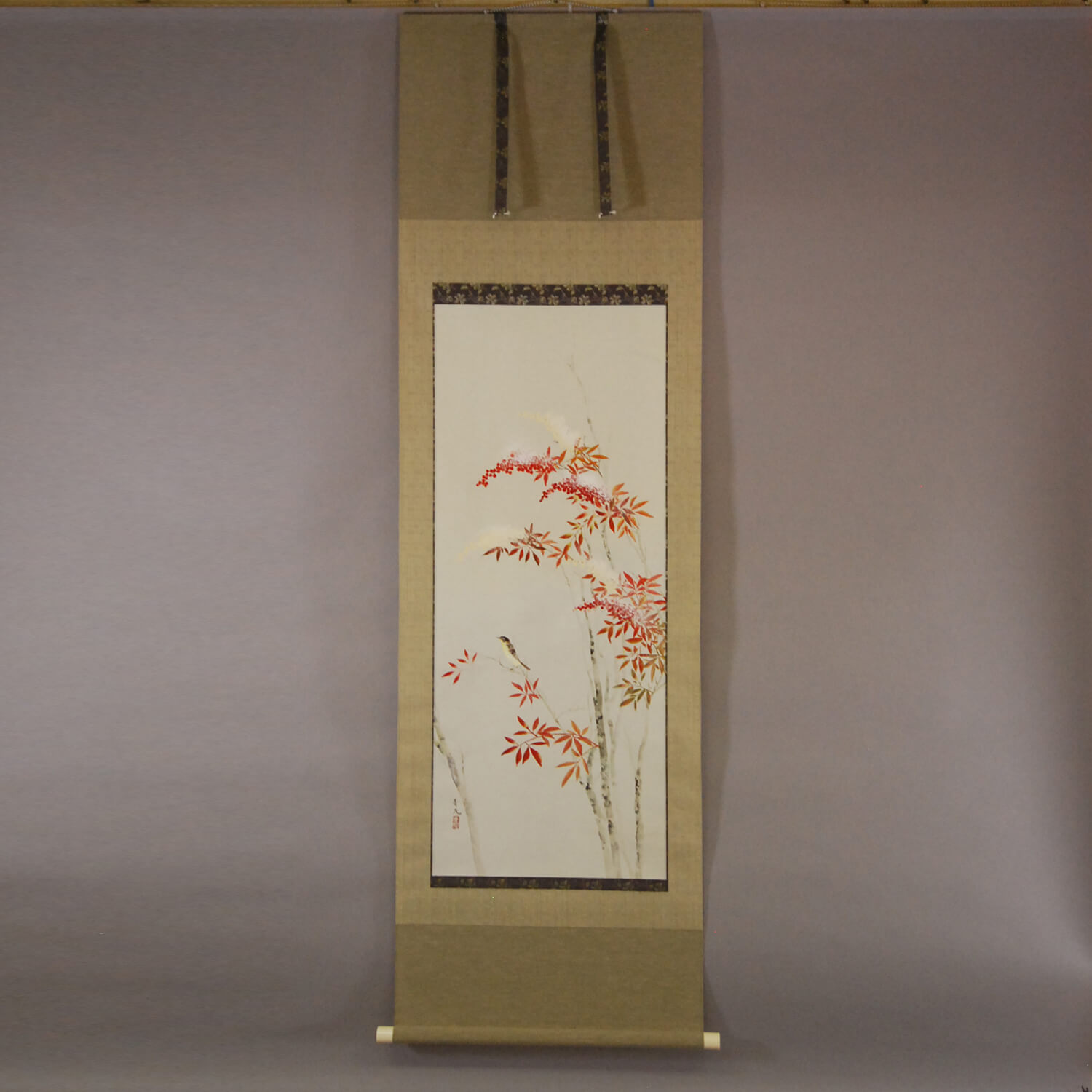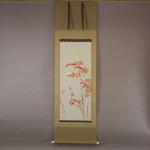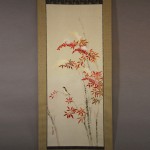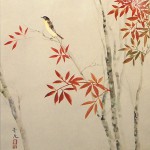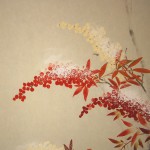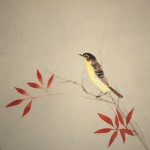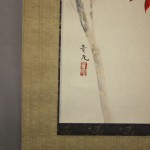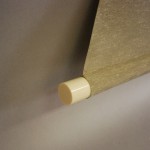Products Lineup
News / Blog
Other Menus
Kakejiku Hanging Scroll: Nandina and Snow / Seika Tatsumoto - Secchuu Nanten
- Product ID
- 0121
- Name
- Seika Tatsumoto
- Profile
1935-
Born in Kyoto- Size
- 603mm x 1910mm
- Roller End Material
- Artificial ivory
- Material of the Work
- Japanese paper
- Stock Condition
- Sold out
- Description
Nandina bears beautiful little red fruits in winter. Although white nandina exists, people generally imagine Nandina as being red. Nandina is called “nanten” in Japan. Nanten is used to pray for happiness because it sounds like “nan-ga-tenjiru”, which means to convert bad luck into good luck. Nandina is not native to Europe or America, so when *Engelbert Kaempfer and *Carl Peter Thunberg saw it for the first time, during the Edo period, they are said to have greatly admired its beauty.
Nandina and snow are often painted together, because a combination of the fruit’s red color and the snow’s white color is called “kouhaku” (a combination of the red and white colors), which is considered a good omen. (However, it is interesting that some people living in areas with heavy snowfall don’t like the depiction of snow.)
This is a painting of nandina and snow by Seika Tatsumoto. The combination of the red and white fruits of the nandina is kouhaku, as is the combination of its red leaves and the white snow, so they are lucky symbols. The depiction of snow is very delicate and beautiful. The depiction of a small bird, which has a majestic air in the severe cold, is lovely. This is why “kachō-ga” (paintings of flowers and birds) by Seika Tatsumoto are so loved.
- *Engelbert Kaempfer (1651-1716) : A German naturalist and physician.
- *Carl Peter Thunberg (1743-1828) : A Swedish naturalist.

